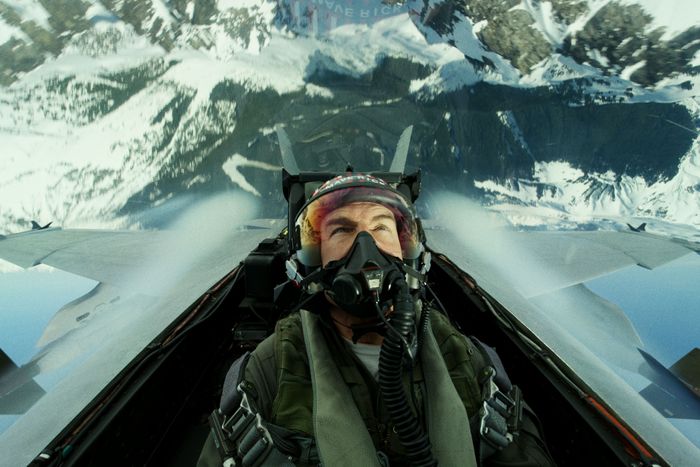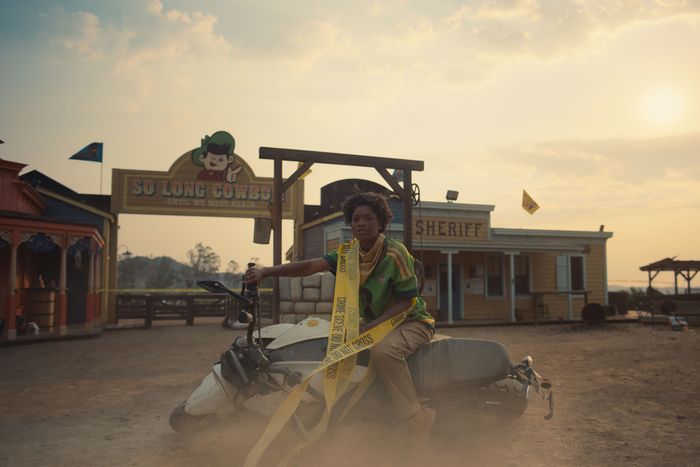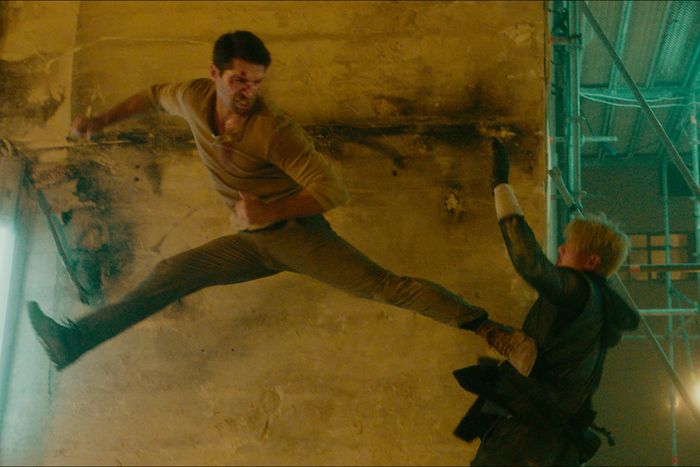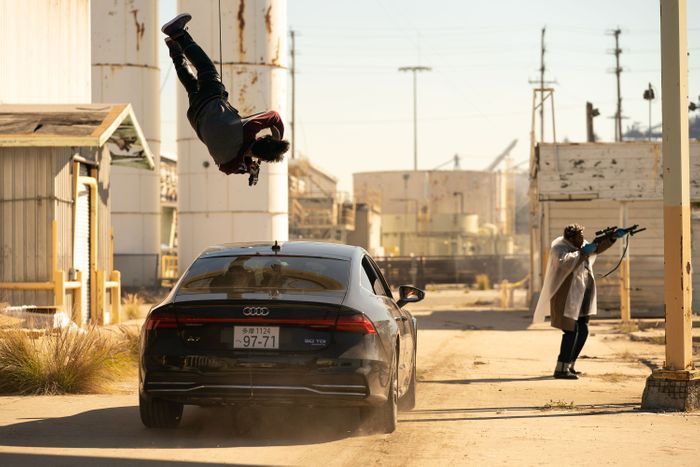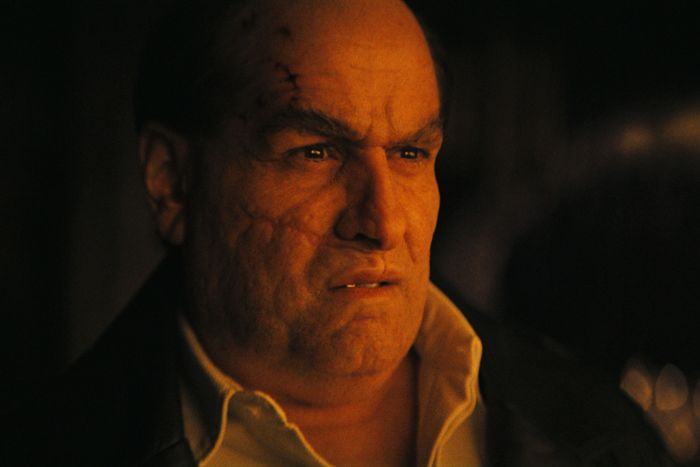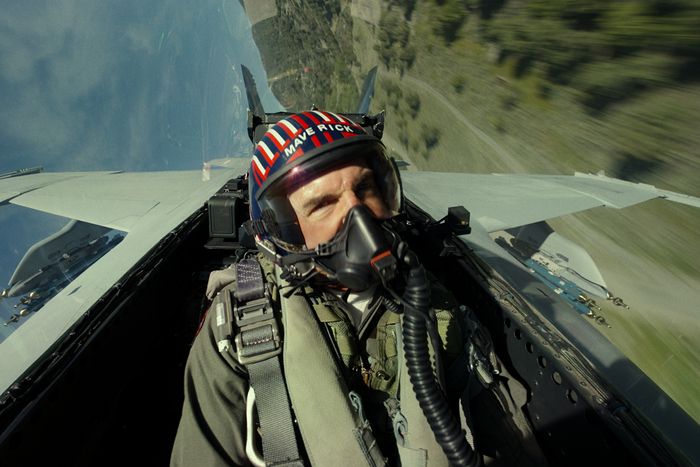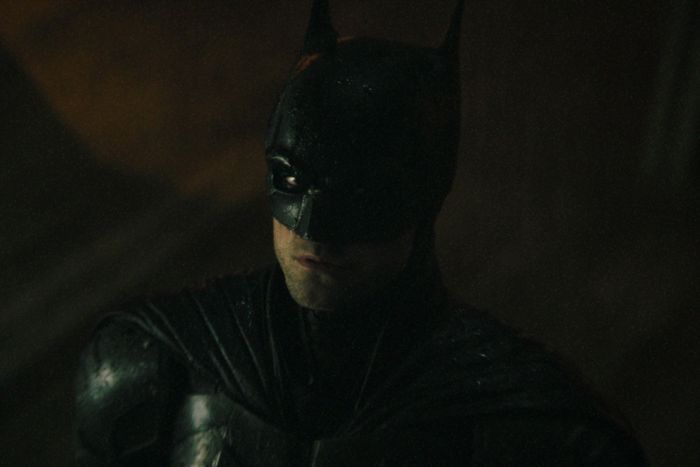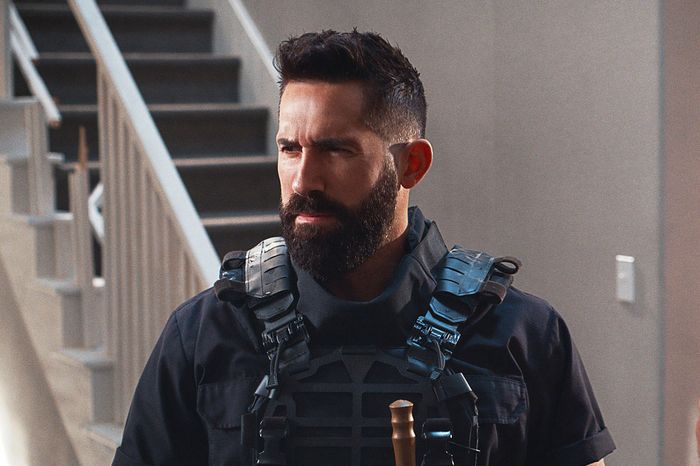Vulture's Stunt Awards
We sometimes talk about stunts as if they are distinct entities from the movies around them — a single, spectacular moment that makes us go “Wow.” Tom Cruise is free-climbing a cliff! Jackie Chan is dangling off a helicopter! A cameraman just followed Matt Damon’s stunt double as he jumped through a window into another building! But it’s unlikely that actual stunt professionals think this way. They will attest that the best stunts (including the aforementioned ones) drive narrative and character as much as costume or production design, and are the result of the very height of collaboration on a film set. The performers, the action designers, the VFX artists, the directors, the cinematographers — all of them work together to create remarkable sequences that are seamlessly integrated into the experience of a movie. Some films, of course, can be built around stunts — think the Mission: Impossible or the John Wick series, both of which will have new entries this year. But even then, the stunts are there to keep us watching, not to take us out of the picture.
Which is why the Academy Awards’ persistent lack of recognition for stunt professionals feels like such an egregious affront. In a year when action-oriented movies including Top Gun: Maverick, Avatar: The Way of Water, Black Panther: Wakanda Forever, and Everything Everywhere All at Once are earning nominations for myriad accomplishments, there is still no Best Stunts Oscar, or any category of celebration dedicated to members of stunts departments. A movement to create one has been brewing for over three decades, but the Academy of Motion Pictures Arts and Sciences has yet to institutionalize a dedicated branch of stunt professionals who can nominate their peers. “It’s like belonging to a very elite golf course, where you can look at the course but you can never play,” says Academy member Jack Gill, a legendary stunt professional and a primary force behind the Stunt Oscar movement.
The oversight dates back to the early days of Hollywood, when stunt folks on westerns and war movies were placed at the bottom of the film-set hierarchy, seen as working-class stiffs who were there to fight, fall, and flop, while directors and stars strove for the artistry. The worst of sets required stunt professionals to sign what were called “blood sheets,” promising they would not sue anyone in the case of death or injury. And deaths did happen; 40 stunt-related deaths occurred on U.S. film sets from 1980 to 1990 alone, with little media coverage — a tragic consequence of an industry obsessed, for a time, with keeping alive the illusion that those were always the real stars up there hanging from cliffs or helicopters.
But as Hollywood grew, so too did the action blockbuster genre, incorporating ever more impressive feats in franchises and metaverses that were impossible to pass off as effortless. Today, actors like Cruise and Keanu Reeves no longer feel it necessary to pretend as though they are pulling off jaw-dropping acts alone, explicitly promoting the work happening behind the scenes to ensure safety and precision. Chad Stahelski, the director of the John Wick films, first met Reeves when he worked as the actor’s stunt double on the Matrix films. “After The Matrix, I went from an average stunt guy to one of the biggest choreographers in the business,” Stahelski told me. Still, even as the Jason Stathams and Arnold Schwarzeneggers of the business have stood up in support of a Best Stunt Oscar over the years, AMPAS has yet to yield.
While we at Vulture can’t rectify this, we can launch our own honors. Enter: The Stunt Awards, created from a desire to not only highlight great stunt work over the past year (and there was great stunt work this year), but to underscore the obvious awards-worthiness of action storytelling. To do so, we created our own academy of voters, a combination of stunt professionals, filmmakers, cinematographers, visual effects artists, and critics. They considered stunt work in feature-length films released between January 1, 2022, and December 31, 2022, appraising individuals scenes and performances, as well as movies on the whole, across 10 different categories. A smaller group of consultants including Gill, director and writer Liam O’Donnell, stunt coordinator and second unit director Angelica Lisk-Hann, and visual effects artist Todd Vaziri helped us to decide what those categories would be — making clear that aerial and vehicular feats deserve to be distinctly celebrated, and that great fights and great shoot-outs are their own art forms. Importantly, this group emphasized that stunts did not need to be purely practical to qualify for our awards. The massive fight sequence that serves as actor Ram Charan’s introduction in RRR, for example, might have involved VFX, but it took 35 days to actually film.
The sheer breadth of the movies nominated by our academy proved that stunts aren’t just for action movies. Today, you’re liable to find spectacular stunt work in everything from a gritty French drama about a banlieu uprising, to a studio erotic thriller, to a documentary. And while action bled into almost every studio project, it appeared in plenty of independent movies too, sometimes amounting to a film like Everything Everywhere All at Once, other times one like Accident Man: Hitman’s Holiday — both ended up getting nods here. Ahead of final voting, we drew even more members into our academy, some of whom rallied for the stunts that felt dangerously real and enormously entertaining (see: Netflix’s Athena), others to stunts that felt otherworldly or just plain enormous (see: 2023’s Michael Bay release). In the end, the winners (and their runners-up) speak to how fundamental stunt work has become to the experience of enjoying a film, and how much damn fun it is to relive a year in action.
Stunt Awards
Best Stunt in an Action Film
Awarded to a specific sequence in an action film that exemplifies the work of a stunt-coordination team.
.
The Nominees
• Ambulance (The L.A. River Helicopter Chase)
• Athena (The Opening)
• RRR (The Bridge Scene)
• Top Gun: Maverick (The Climactic Dogfight)
• Top Gun: Maverick (The Training Montage)
.
The Winner
Top Gun: Maverick, The Final Dogfight
Awarded to stunt Coordinator Casey O’Neill; second unit director Eric Schwab; lead camera helicopter/camera jet pilot Kevin LaRosa II; director of photography David B. Nowell, ASC; additional director of photography Michael Fitzmaurice; L39 Pilots Randy Howell and Scott Kartvedt; helicopter pilots Kavin Larosa, Sr. and David Paris; Pilot Phenom co-pilots Steven Hinton and Jonathan Spano; Cinejet crew chiefs Jeff Jess and Thomas Roybal; Shotover technicians Stephen Scherba, Jared Slater, and Peter Graf; visual effects supervisors Ryan Tudhope, Bryan Litson, and Seth Hill; special effects coordinator Scott R. Fisher; and performers Miles Teller and Tom Cruise.
Best Stunt is a massive category — and one that perfectly encapsulates how varied and diverse the world of stunts is. The nominees featured everything from the gritty, coordinated, street-level mayhem of the opening sequence in Romain Gavras’s Athena, to the cinematic maximalism of the L.A. River helicopter chase in Michael Bay’s Ambulance, to the comic-book lunacy of the bridge scene in S. S. Rajamouli’s RRR. Athena and RRR tied for second in this category. For Athena, voters cited the seeming impossibility of the film’s 11-minute, single-shot introduction, as well as its remarkable visual storytelling. For RRR, they singled out the rousing nature of the bridge sequence as well as its sheer creativity. But it shouldn’t come as any surprise that Top Gun: Maverick — one of the biggest movies of recent years, and one widely praised for the real-world authenticity of its flight sequences — wins this one.
Maverick had two contending sequences in this category, the other being the training montage early on when Tom Cruise’s Pete “Maverick” Mitchell schools the young pilots on various maneuvers. (In that sequence, Maverick establishes his superiority as a pilot over his students, who have until that point mostly dismissed him as a relic, by effectively fake-“killing” each of them in the air, thus proving that none of these cocky fliers are ready for the inevitable dogfights that they will face as part of their mission.) These scenes are a combination of daredevil flying by professional fighter pilots as well as shots of actors like Tom Cruise and Miles Teller inside the cockpits of real jets in motion (as well as some CGI), all in an effort to establish a level of legitimacy that informed the entire film.
Maverick ultimately builds up to the sequence that won our award, when our hero has to put his raw skills up against an enemy pilot with a superior piece of technology. The movie is about individual, human ability transcending weaponry, and watching Maverick and Rooster (Teller) in an ancient, barely operative F-14 face off against a next-generation fighter jet that can — conveniently, for a stunt category — do all sorts of amazing moves in the air feels like the picture’s thesis distilled down to one beautiful, hair-raising sequence.
Stunt Awards
Best Stunt in a Non-Action Movie
Awarded to a specific sequence in a non-action film, defined as a movie not predominantly occupied by physical spectacle in the form of fights, chases, explosions, and other violence.
.
The Nominees
• Deep Water (The Bike Chase)
• Jackass Forever (Knoxville vs. Bull)
• Nope (The Final Sequence with Keke Palmer’s “Akira Slide”)
• Thirteen Lives (The Rescue)
• Triangle of Sadness (The Boat Tilt/Toilets Explosion)
.
The Winner
Nope, The Final Sequence
Awarded to stunt coordinator Mark Vanselow; stunt doubles Carrie Bernans and Tiffany Abney; additional stunt Double Kortel Autrey; SPFX Coordinator Scott Fisher; operator Roland Loew; edge driver Dean Bailey; crane operator Rob Petrin; and performer Keke Palmer.
Come on, where else are you going to find Triangle of Sadness, Deep Water, and Jackass Forever facing off against one another? This was one of our more delightful categories — one which we defined as being a stunt-based sequence in a movie not predominantly occupied by fights, chases, explosions, or other violence — and the winner was a film that straddles the worlds of horror, action, fantasy, comedy, and drama: Jordan Peele’s masterfully perplexing Nope, with its bravura climax, which involves Keke Palmer’s Emerald Haywood riding a motorcycle heroically into the fake western town of Jupiter’s Claim and capping it all off with an “Akira slide” (a clear allusion to the revolutionary 1988 anime classic) as she careens sideways, almost horizontally, into a dead stop. Peele shoots the scene with the rousing grandeur of an old-school western, but there’s a real emotional context to it as well. Em’s brother, OJ (Daniel Kaluuya), has essentially turned himself into bait for the movie’s enormous, mysterious alien presence (a.k.a. Jean Jacket), so Em is racing against time to save her brother.
Nope is a surprisingly melancholy blockbuster, with a deadpan sense of dread that makes anything feel possible. And its climax, playful and profound in equal measure, makes for a perfect finale, as it allows Palmer’s character to take center stage with a great feat of riding skill. (Remember, Em and OJ, as a family of horse trainers for movies and TV, are themselves stunt-adjacent characters.) “I just can’t forget how good these concluding minutes or Nope are,” wrote one voter. “The varied coordination required, the spectacle of it all, how clear it is that Palmer’s character is the heart of this film. The slide is just slick as hell.” The runner-up in this category? Johnny Knoxville and Jackass Forever, which makes us wonder if next year we should have a “Best Stunt in a Documentary” category.
Stunt Awards
Best Fight
Awarded to a hand-to-hand combat sequence that does not involve guns, though it can involve other weapons.
.
The Nominees
• Accident Man: Hitman’s Holiday (Scott Adkins vs. Andy Long)
• Everything Everywhere All at Once (The Fanny-Pack Fight)
• Lost Bullet 2 (The Police Station Fight)
• RRR (Ram’s Intro)
• Prey (The Final Fight)
.
The Winner
Accident Man: Hitman’s Holiday, Scott Adkins vs. Andy Long Nguyen
Awarded to performers and fight choreographers Scott Adkins and Andy Long; directors The Kirby Brothers; stunt coordinator Morgan Chetcuti; stunt performers Victor Aquilina and Catalin Bindiu; and director of photography Richard Bell.
“You can’t deny Adkins vs. Long in this orgylike assault on the senses,” wrote one voter. “I mean, come on, this is blood and popcorn at its finest!” We forget sometimes that action movies are supposed to be fun. All too often, the beatdowns in these films are gritty and mean and serious — which is sometimes the right direction to take. But how thrilling it is to see a fight that is unafraid to just show people kicking each other’s asses in a variety of ways, and looks like it was both a joy and painful to choreograph and shoot. So much of Hitman’s Holiday is filled with surreal, colorful, crazy fights and stunts involving surrounding objects, for which glass tables get repeatedly destroyed. (The movie is about an assassin who kills people by staging “accidents” that result in beheadings and other gruesome mishaps.) By the time Andy Long Nguyen shows up, however, it feels like all the creative prop work has been exhausted. So what we get is pure movement: An extended sequence in which the two adversaries fight with impossible speed and grace. For a movie with so much silly, gruesome mayhem, there is suddenly an incredible charge to a fight sequence based solely around skill. Suddenly, shit seems real.
In Hollywood studio movie fights, the choreography is usually worked out in intense detail beforehand, and then prepped and practiced for a long period. In the classic days of Hong Kong action, however, the sequences were built up as the shoot went along: One move led to another, which led to another, as the filmmakers and stuntpeople used their imaginations to come up with inventive new moves on the spot. This led to an unpredictability in the action that revolutionized cinema across the world in the ensuing years. The action in this Hitman’s scene feels like a throwback to some of that old-school insanity.
“Hitman’s Holiday is further proof that for proper martial arts action you have to look at the DTV and indie realm,” wrote one voter. “Adkins and Long craft a fight that feels at the same time both exceedingly modern and a throwback to classic Hong Kong fights of the ’80s and ’90s.” The same could actually be said of Ke Huy Quan’s fanny-pack fight in Everything Everywhere All at Once, which placed second in the category. There too is a scene that works as an homage to classic martial arts fights, executed by an actor who himself worked as a fight choreographer alongside the great Corey Yuen on films like X-Men and The One.
Stunt Awards
Best Shootout
Awarded to any sequence involving guns at relatively close range.
.
The Nominees
• Ambulance (The Bank Heist)
• The Big 4 (The Compound Siege)
• Bullet Train (The Flashback Shootout with Lemon and Tangerine)
• RRR (The Piggyback Dual Wielding)
• Vikram (Vikram’s Giant Gun)
.
The Winner
Bullet Train, The Flashback Shootout with Lemon and Tangerine
Awarded to stunt coordinator and stunt choreographer Greg Rementer; fight coordinator Kirk A. Jenkins; cinematographer Jonathan Sela; unit Director David Leitch; and notable stunt professionals Nathaniel Perry, Kyle McLean, Jaylil Jay Lynch (motorcycle stunt in that sequence), David Leitch (17th kill), and Woon Young Park (fish hook guy).
The art of the movie shoot-out is becoming something of a lost art. Once upon a time, it was the defining feature of an average action flick. Think The Rock or the Lethal Weapon series or Heat or the great westerns of the past. But with the rise of superhero movies, whose main characters can do far more damage with telekinesis, and the increasing pressure put on Hollywood four-quadrant movies to be as family friendly as the comic-book adaptations, shoot-outs became a bit passé.
This year’s nominees, however, all revived the art in their own ways, each trying to reinvent the old trope by doubling down on the classicism (“We gotta encourage people to rip off Heat,” one voter wrote), or cross-breeding it with other combat genres like martial arts or swordplay or vehicular mayhem. You could, indeed, say this about the two runners-up, RRR and Ambulance, which are both wonderful examples of extreme cinematic maximalism and genre-melding, with directors Michael Bay and S.S. Rajamouli throwing pretty much everything at the viewer.
The winner, Bullet Train, might seem like an unlikely choice at first. But go back and look at the sequence, which is effectively a darkly comic flashback montage of the film’s two hitmen brothers, Lemon and Tangerine, trying to remember how many people they killed during a recent job. Directed by David Leitch (himself a legendary stunt coordinator), it’s basically a catalog of eye-popping elements. Each kill involves an impressive stunt or effect of some sort: Some involve heads being blown off, some involve falls from great heights, some involve people being sliced with swords (yes, given the context, it still counts as part of the shoot-out). It’s all very wink-wink (à la Quentin Tarantino or Guy Ritchie), but it’s done with the assurance of a stunt team working at the height of its powers, which makes the throwaway quality of the sequence that much funnier: Here are a million amazing moments, each of which could have been the climax to a different movie, presented a mile a minute.
Stunt Awards
Best Vehicular Stunt
Awarded to any sequence involving motorized vehicles.
.
The Nominees
• Ambulance (The L.A. River Helicopter Chase)
• Athena (The Opening)
• The Batman (The Batmobile Penguin Chase)
• The Gray Man (The Tram Chase)
• Lost Bullet 2 (The Freeway Chase)
.
The Winner
The Batman, The Batmobile Penguin Chase
Awarded to supervising stunt coordinator Robert Alonzo; stunt coordinators Jake Dewitt, Steve Griffin, and Samuel Le; stunt performers Rick English, Shane Roberts, Joel Conlan; director Matt Reeves; visual effects supervising producer David Conley; and director of photography Greig Fraser.
Filmed through a dense blur of rainfall and the almost abstract swirl of car lights reflected in windows, the centerpiece car chase in Matt Reeves’s The Batman is a good reminder that it’s not necessarily the clarity or the technical impressiveness of a stunt that makes it; it’s the effect on the viewer. Though let’s be fair, there’s plenty to impress here too — from the toppling trucks and careening cars to the tire’s-eye angles on the chase. It is a gorgeous, tense sequence, and when you drill down into how it was made, it starts to feel even more special. In many ways, it’s a perfect blend of practical stunts and CG work: “Although significant sections were augmented or wholesale replaced by computer graphics,” one in-the-know voter wrote, “the audacity of the physical staging and the tactile, dangerous nature of the finished product is a result of intricate and meticulous planning by the stunt teams.”
And it’s not just the stunts and the CGI. It’s the whole product, right down to the sound work, with its competing sounds for the different vehicles, all mixed in with the audio of screeching traffic and the chaos of the weather. It’s spectacular, and spectacularly bleak, too: “The muscular rumble and roar of the Batmobile’s engine hits audiences in their guts. It’s a pursuit that keeps character and vehicular mayhem at the forward, all to form its heady high,” wrote another voter.
Stunt Awards
Best Aerial Stunt
Awarded to any sequence that takes place predominantly in the air.
.
The Nominees
• Ambulance (L.A. River Helicopter Chase)
• Devotion (Insubordination)
• Jackass Forever (Flight of the Icarus)
• Top Gun: Maverick (Climactic Dogfight)
• Top Gun: Maverick (Training Montage)
.
The Winner
Top Gun: Maverick, Climactic Dogfight
Awarded to stunt Coordinator Casey O’Neill; second unit director Eric Schwab; lead camera helicopter/camera jet pilot Kevin LaRosa II; director of photography David B. Nowell, ASC; additional director of photography Michael Fitzmaurice; L39 Pilots Randy Howell and Scott Kartvedt; helicopter pilots Kavin Larosa, Sr. and David Paris; Pilot Phenom co-pilots Steven Hinton and Jonathan Spano; Cinejet crew chiefs Jeff Jess and Thomas Roybal; Shotover technicians Stephen Scherba, Jared Slater, and Peter Graf; visual effects supervisors Ryan Tudhope, Bryan Litson, and Seth Hill; special effects coordinator Scott R. Fisher; and performers Miles Teller and Tom Cruise.
Michael Fitzmaurice, aerial unit director of photography, and Kevin LaRosa II, the aerial coordinator/camera pilot for Top Gun: Maverick, also worked together on JD Dillard’s excellent Korean War drama Devotion this year, so they were partly running against themselves in this category, with their names on three of the five nominees. (Though, let’s be fair, Johnny Knoxville’s “Flight of the Icarus” was an inspired nominee as well.) The climactic dogfight in Maverick, which also won our Best Overall Stunt category, is a wonderful example of everything (and everyone) working together: There’s impressive aerial photography, there’s the presence of real actors in real fighter-jet environments who move and look like people experiencing the actual effects of being in a speeding plane, there’s stunning maneuvers and stunts being done by professionals in real planes, and there’s plenty of CGI — sometimes creating planes out of thin air, sometimes changing backgrounds, sometimes adding explosions — to make sure it all flows and looks convincing.
As one voter put it, “Perfect marriage of practical and CG visuals create the most exciting aerial battles in decades.”
Stunt Awards
Best Practical Explosion
Awarded to any sequence that involves any reactive substance that amounts to an explosion.
.
The Nominees
• Ambulance (The Exploding Decoy)
• Athena (The Molotov Cocktail Surrounds Police)
• The Batman (The Batmobile Penguin Chase Climax)
• Lost Bullet 2 (The Electrified-Car Explosion)
• RRR (The Bridge Scene Tanker Explosion)
.
The Winner
The Batman, The Batmobile Penguin Chase Climax
Awarded to supervising stunt coordinator Robert Alonzo; stunt coordinators Jake Dewitt, Steve Griffin, and Samuel Le; stunt performers Rick English, Shane Roberts, Joel Conlan; director Matt Reeves; visual effects supervising producer David Conley; and director of photography Greig Fraser.
“I got you!! I got you!!” Colin Farrell’s desperate cry of triumph, thinking that he’s managed to evade Batman, followed by the terrifying and sublime spectacle of the Batmobile emerging from the flames of an exploding truck — all seen through a side-view mirror. The Batmobile bounces as it hits the ground, Dukes of Hazzard–style, which gives a sense of a real car flying through real air and landing on real asphalt. But how much of it is really real? Some of it is computer generated — this is, after all, a comic-book movie — but it’s meant to enhance the real-world stunt, a marvelous capper to a spectacular chase, shot by cinematographer Greig Fraser (singled out by many of our voters) for maximum hellish impact.
The runners-up in this category offer a variety of different approaches to practical explosions. The Molotov cocktail used to surround a group of riot police in Athena involves real bursting flames, filmed with real actors. (“It’s the smallest explosion on this list, but it’s the one that feels real,” wrote one voter. “It looked very dangerous for all involved,” wrote another.) The explosion of the decoy ambulance in Ambulance is a classic Michael Bay moment, seen from pretty much every angle. (“Every possible detail, each spark, each torn and warped piece of steel, is shown to you in a rapid-fire sequence.”) Meanwhile, the tanker-scene explosion in RRR is pure cartoonish spectacle, reminding us that movie explosions can be fun and cathartic. The Batman makes clear they’re fearsome too.
Stunt Awards
Best Overall Action Film
.
The Nominees
• Accident Man: Hitman’s Holiday
• Ambulance-Top Gun: Maverick
• Athena
• Avatar: The Way of Water
• Lost Bullet 2
• The Northman
• Prey
• RRR
• Top Gun: Maverick
• The Woman King
.
The Winner
Top Gun: Maverick
Awarded to stunt Coordinator Casey O’Neill; cinematographer Claudio Miranda; and producers Jerry Bruckheimer, Tom Cruise, Christopher McQuarrie, and David Ellison.
What’s left to say about Top Gun: Maverick? “Every morning, we’d start with a two-hour brief with all the actors, all the Navy pilots,” director Joseph Kosinski told us last year, discussing the shoot, “and we’d go through every single storyboard, every single scene, every line of what we needed to achieve that day. Weather, safety, terrain, light placement.” He added: “It was very tedious — it would bore you to tears.” Then, after the director and the actors practiced and rehearsed in a mock-up for an hour, they’d send the actors up in the air with real pilots to shoot for an hour. They’d come back, review the footage, and then go back up in the afternoon. They did this for months. It sounds backbreaking and soul-sucking, but it all paid off.
Maverick won two of our other categories; it’s nominated for Best Picture at the Oscars; and it managed to show the world that people will happily flood theaters over and over to watch an excellent, old-school action movie of the kind Hollywood regularly used to make back in the day. Maverick is a great example of art and craft, spectacle and sentiment, working together. The actors feeling real g-forces on their bodies give enormously different performances than if they had just been sitting in a fake plane attached to a gimbal, pretending to fly. The same goes for the planes doing real-life maneuvers. It all adds a level of authenticity to a story that, because of its ultimately fanciful nature (remember, this is a movie where the enemy is never named) would feel ridiculously phony if it didn’t feel so damned real. And that in turn sells the movie’s emotions. Maverick’s action sequences are enormously exciting and eye-popping, but they’re also always in service of the story and its characters. “It’s a mixture of emotion and action, character design and delivery,” wrote one voter. “There’s nothing like it.”
Stunt Awards
Best Achievement in Stunts Overall
Awarded to the best overall stunt professional (or duo) in 2022.
.
The Nominees
• Scott Adkins
• Jerome Gaspard
• Kevin LaRosa II
• Andy and Brian Le
• Jordan McKnight
• Amber Midthunder
• Nick Powell
• Solomon Raju
• Jenel Stevens
• Michelle Yeoh
.
The Winner
Scott Adkins
It’s about time Scott Adkins became a household name. The Birmingham, England–born martial artist and actor has been headlining a particular type of artfully balls-out action movie for years now. (He was the star of 2012’s Universal Soldier: Day of Reckoning, a deranged, surreal masterpiece that is spoken of in hushed, reverential tones among action nerds. That year, by the way, was also when Jason Statham punched Adkins into a helicopter’s tail rotor.) Adkins’s particular gift is that he can pretty much do anything onscreen; the man is famously trained in six different martial arts. That certainly gives him a certain aura as an actor. “He’s incapable of playing a character who has not at some point in his life snapped someone’s arm in two,” wrote our own Alison Willmore last year. This also means that his films can nonchalantly avoid the predictable cuts required to seamlessly blend the work of stuntmen and stars. Maybe that is why some have taken to calling him The Human Special Effect.
As the star of Accident Man: Hitman’s Holiday (which won our Best Fight category), Adkins got another of these showcases for the diversity of his physical feats. The power of this cannot be understated. Something striking happens when you watch a film that is built around sheer human ability. The very grammar of filmmaking is upended, and you simply have no idea what to expect. What you’re watching seems so strange, so unlike anything you’re used to seeing, that it basically reduces you to a state of childhood, watching in open-mouthed astonishment.
This was a huge category, and fairly close behind Adkins in second place was the great Michelle Yeoh, another actor with a stunts and martial arts background, also renowned for her ability to achieve remarkable sequences onscreen without the use of a stunt double. In many ways, with her key roles in the iconic Hong Kong movies of the 1980s and ’90s, Yeoh helped create and establish the kind of filmmaking that made a Scott Adkins possible, and he’d probably be the first to tell you that. She has already been garlanded with many prizes this awards season and may well be on her way to an Oscar win as well, for her role in Everything Everywhere All at Once. The Academy may not be giving out an official Best Stunts prize yet — but without stunt work and stuntpeople, their nominations and awards this year would have looked a lot different.
Stunt Awards
Lifetime Achievement Award
Read about our first ever Lifetime Achievement winner, Albert Pyun, here.
More From This Series
- And the Winners of the 2024 Stunt Awards Are …
- The Second Annual Stunt Awards Are Here
- Academy Awards Reportedly in Preliminary Talks for a Stunt Category











